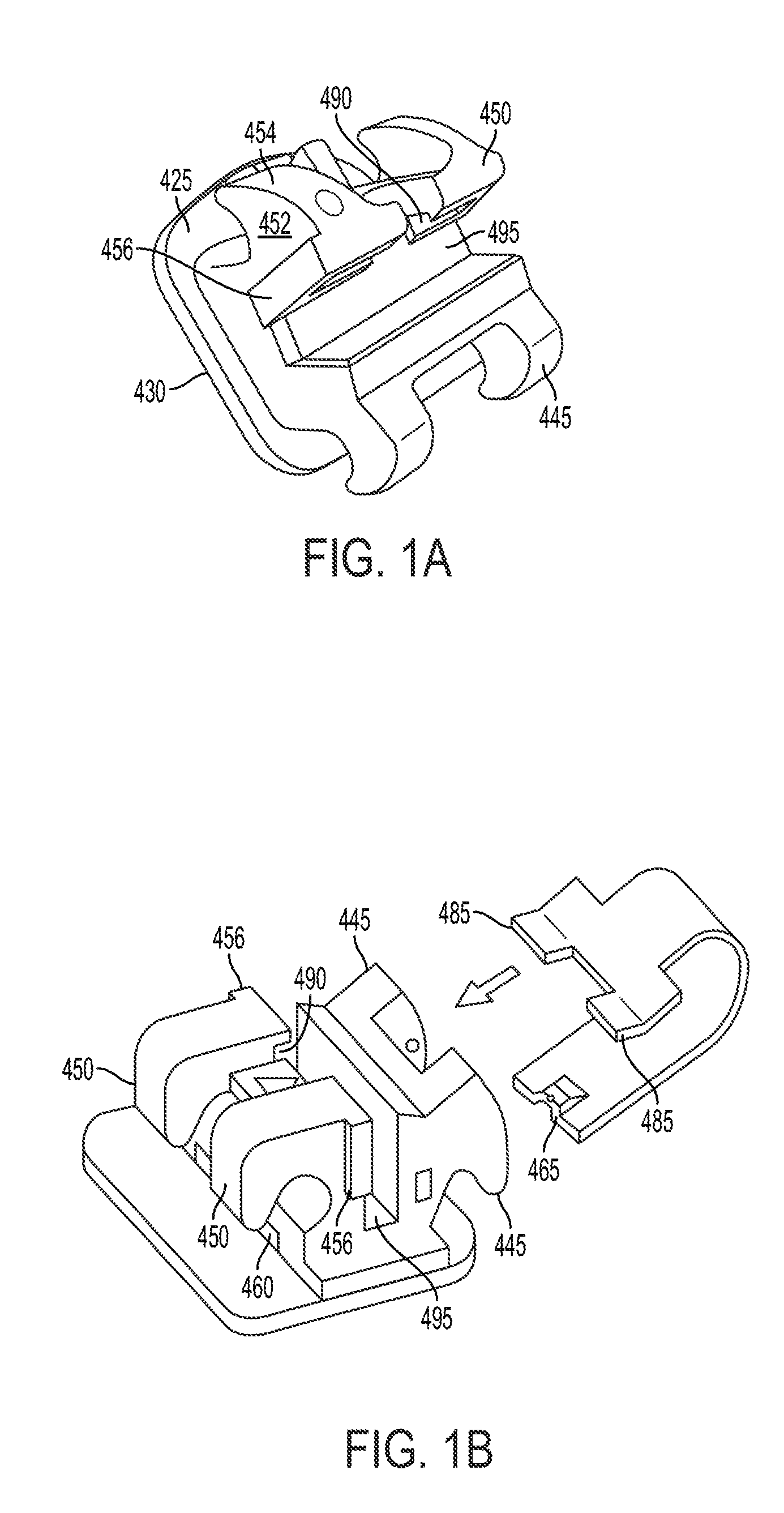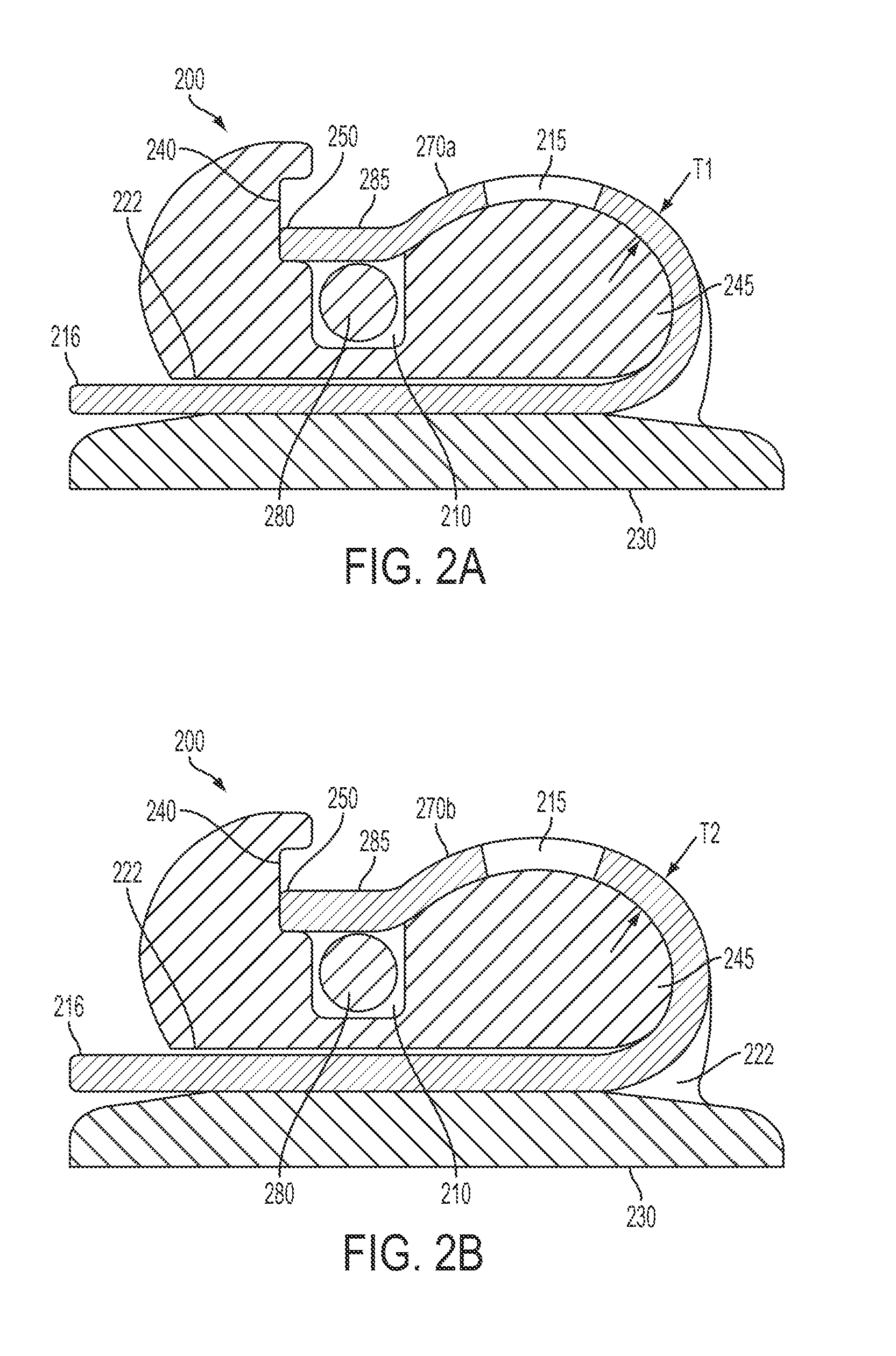Biocompatible self-ligating brackets
a self-ligating, biocompatible technology, applied in the field of orthodontic brackets, can solve the problems of risk of root resorption and/or shortening, prior art self-ligating brackets have not been able to accommodate the varying root sizes and strengths, and achieve the effect of fewer complications
- Summary
- Abstract
- Description
- Claims
- Application Information
AI Technical Summary
Benefits of technology
Problems solved by technology
Method used
Image
Examples
Embodiment Construction
[0027]The invention as herein described is applicable to a variety of types of self-ligating orthodontic brackets, and the teachings of the invention will readily be adapted to various implementations of such self-ligating orthodontic brackets. In order to illustrate the invention and show several working examples, various embodiments are described with respect to a typical structure of an orthodontic bracket. With reference to FIG. 1, there is shown a bracket including a body 452 having a bonding base 430 for attachment to a tooth. The base includes a pair of laterally spaced gingival tie wings 450, and a pair of laterally spaced occlusal tie wings 445. The gingival 450 and occlusal tie wings 445 project from a labial surface of the body 452, with the occlusal tie wings 445 defining one or more grooves for receiving one or more arm members 465 of a locking shutter 470 through the occlusal tie wings 445. An archwire slot 495 is provided extending mesiodistally across the body and be...
PUM
 Login to View More
Login to View More Abstract
Description
Claims
Application Information
 Login to View More
Login to View More - R&D
- Intellectual Property
- Life Sciences
- Materials
- Tech Scout
- Unparalleled Data Quality
- Higher Quality Content
- 60% Fewer Hallucinations
Browse by: Latest US Patents, China's latest patents, Technical Efficacy Thesaurus, Application Domain, Technology Topic, Popular Technical Reports.
© 2025 PatSnap. All rights reserved.Legal|Privacy policy|Modern Slavery Act Transparency Statement|Sitemap|About US| Contact US: help@patsnap.com



